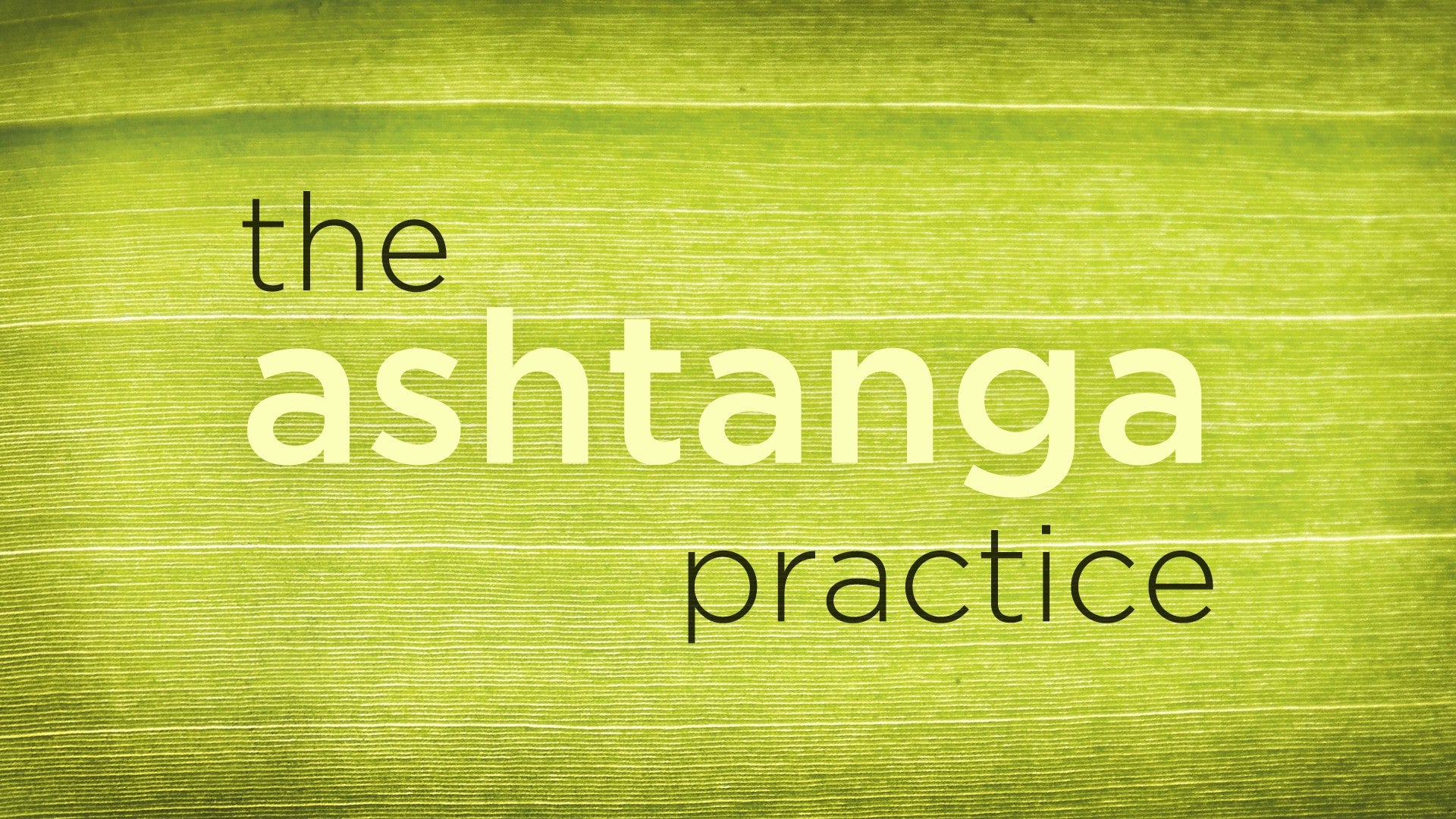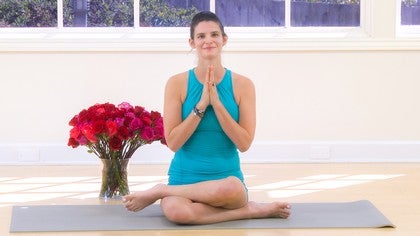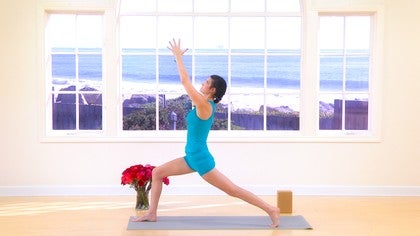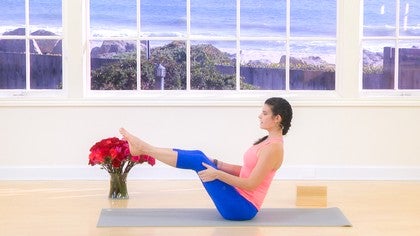Description
About This Video
Transcript
Read Full Transcript
This is The Elements of Ashtanga, and in this session we're going to be breaking down various parts of the primary series practice, and there's often some confusion about what that practice even is. So before we even start to move, we're just gonna chat a bit about what the elements of Ashtanga are. So if you think of yoga is like this broad term right? Underneath that umbrella, there's so many different styles of practice, varying from Kundalini, to Bhakti, to Jivamukti, to Iyengar, to Hot Power Bikini Fits, to Ashtanga. Ashtanga is, probably, a or one of the original power yogas.
So it's, if you think of like those power classes right, like core-power, vinyasa, those are all derivatives of Ashtanga, it's the original flow yoga. So, there are five elements that separate Ashtanga from other styles of yoga, other systems, and so we'll look at those in a minute but before we get into that just, at its most basic Ashtanga is a system of yoga. So if you walk into a studio in Shanghai, China, or in Los Angeles, or in Moscow, you're going to be doing the same postures, in the same sequence, with the same rhythm, the same names. It's like, a country, and it has its own language, it has its own culture, so we're just going to be exploring a little bit, what those, what that language is. So Ashtanga was created by Sri K. Pattabhhi Jois in Mysore, India.
It was a practice given to him by his guru Krishnamacharya, and it's a very dynamic system of yoga. It's a flowing practice, so once you start to move you don't really stop. You get very sweaty, you probably will notice some, some muscle tone, it's a, it's a bit of a workout. So later on when, if you're joining for a practice, you'll get to experience that for yourself. It's 99% practice.
You get on your mat, you do the work, 1% theory. So before we start to do the work, I'm gonna give you the 1%, the five principles that separate Ashtanga from other systems. One, is bandhas. So bandhas a word that means lock. I'm sure some of you are familiar with this term already so I won't go into great detail about it.
The locks that we're most concerned with in this practice are Uddiyana bandha and Mula bandha. So Mula bandha is the root lock, it's the foundation of all things. It's also your bowel and bladder control muscles. So just imagine that you have to go the bathroom but you can't, similar to that, and you wanna keep Mula bandha engaged and active throughout your whole practice. On a scale of one to 10, 10 being the highest, maybe like a four or a five and you'll know when you need to take it up a notch and when you don't.
Uddiyana bandha, is the lower belly. So if you take three fingers just like this and put them, so here's my navel and you put your three fingers just below your navel and then you go, (slurps air in) in and up. That's Uddiyana bandha, upward flying lock. Not here, (slurps and breaths in) because then I can't breathe, right? This is what you do when you're at the pool in seventh grade, you suck in up here.
This is where you're breathing right? You want this to be nice and full, (breaths in deeply) so you can breathe, which brings us to number two which is ujayyi, the breath. Ujayyi in sanskrit means victorious, and it's a very special kind of pranayama. It has a specific sound, it has a specific feel. So I want you to imagine, just for a moment, that you're going to whisper.
You can even whisper like say, ujayyi, like that. When you whisper, you lock your throat a bit, you constrict here, and when we use ujayyi we do the same things. We breathe through the nose with constriction in the throat, right across the ribs. So I don't use my belly to breathe like this because I'm, (slurps) got my bandhas going on. I keep my breath here into my ribs, so when I inhale, (breathing in) my ribs move away from my spine, and when I exhale, (breathing out) they pull back in.
And at the same time that that is occurring, (slurps) with Uddiyana bandha and Mula bandha. You can't have one without the other. Generally speaking we don't breathe through the mouth, although if you're new to this practice, you might find that that's what you're doing, that's okay. Try to breathe through your nose, just see how it feels, and if you need to let out a cheeky little exhale like, (exhales heavily) that's okay. So we've got one, bandhas, two, ujayyi, the breath, number three is drishti, which is your gazing point.
So each posture has an assigned gaze. There are nine in this practice. One is your third eye or the center of your brow, there's far-left and far-right, the tip of your nose or the bridge of your nose, your toes or your feet, your belly looking down like this, distance, space, your hands, thumbs, so in a warrior two you'll be looking out over the middle finger, and generally speaking when you're practicing in a class, you don't really want to be looking from side-to-side at what your neighbors are doing. The drishti is kinda of a, mind your own business type of rule. It helps you focus, it helps you bring your intention really clearly to your posture and to your breath.
So just to quickly review, we've got bandhas, ujayyi, drishti, number four is vinyasa. So anyone who's done yoga, any point in the Western world has heard the word vinyasa. It most commonly refers to a flowing class, like exhale chaturanga, inhale up-dog, exhale down-dog, that's called a vinyasa. But it also means simply to link the postures. So in this instance in Ashtanga, it means we're linking all of the postures, we're flowing.
So the vinyasa from padangusthasana to padahastasana, from trikonasana to parivrtta trikonasana. Those are all vinyasas, they're all connected. And the last one, when I ask my students this no one can ever guess this, but it's the most obvious if you've ever practiced Ashtanga, repetition. You do the same thing, over and over again. And it's not like, repetition in like your daily commute where it gets little bit like, (frustrating heavy sigh) like this.
It's very focused, dedicated repetition. You're doing the same thing over and over again so that you can create space for something amazing to happen, like, that's the most powerful way to observe change and to make change. So when you're new to Ashtanga sometimes you think, oh god five A, five B, standing series, seated series, back-bend it's, never changes. People say, "Oh I don't wanna do Ashtanga, I like to have a little spice, I like to have a little variety." That's okay, I like variety too, but within this practice the variety comes from here, it comes from inside because you're doing the same things in order to experience something new. So, drishti, bandhas, ujayyi, vinyasa, repetition.
These are the five elements that separate Ashtanga from any other practice, although you will encounter all of these things in other systems. This is what makes Ashtanga, Ashtanga. Thank you, I look forward to seeing you soon.
The Ashtanga Practice: Sarah Lowe
Comments
You need to be a subscriber to post a comment.
Please Log In or Create an Account to start your free trial.

















